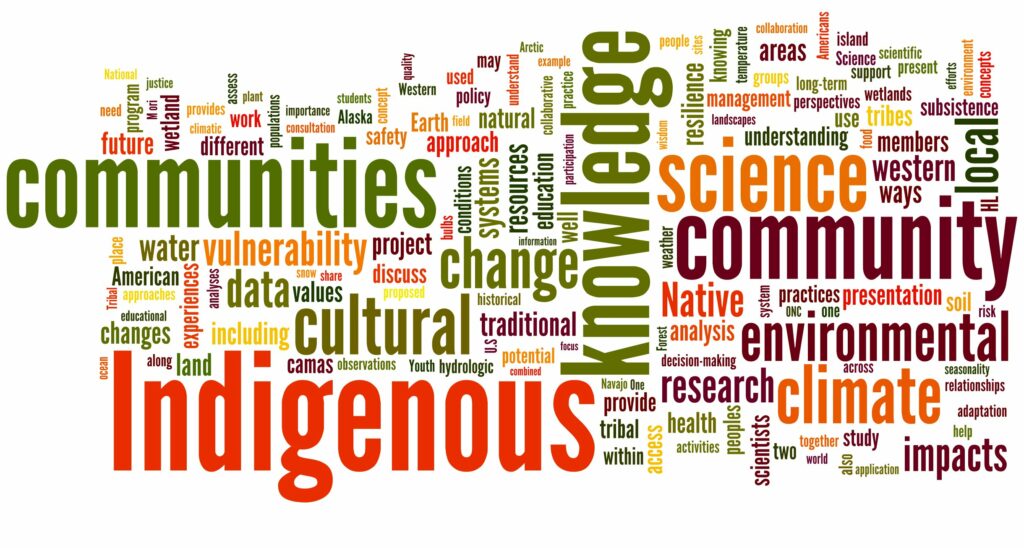
People believe that they live in an era of digital world but is justifiable to say that while being lived a life of change over the years without listening to the indigenous ways. However, technology is a galaxy where knowledge can be stored to be accessed by anyone interested. This change in digital technology is having both a positive and negative effect on Indigenous communities. According to Steeves (2015), priority should be given to maximizing the benefits by reducing the negative effects. Some indigenous communities have used digital technologies to record and share their traditional knowledge with other communities. Moreover, the manner digitization is embraced can vary from indigenous community to community (Klyne, 2023; Steeves, 2015).
The incorporation of the Indigenous knowledge system with the digital world is a fascinating field to learn about. The initial question that comes to our mind is that indigenous ways of learning do not go hand in hand with the digital world which is not learning from land. The way I perceive the connection is that the digital world is a medium to archive or preserve the indigenous knowledge system for others to learn and access it without misinterpreting the data.
With the acceptance of indigenous learning and knowledge, the government has taken measures to include indigenous schools of thought in the school curriculum which is a great start for a citizen of a country to be aware of their indigenous peoples culture, and traditions, and for the teachers to blend the indigenous teaching to deliver such knowledge. However, many universities have created programs on online platforms for those interested to learn about indigenous cultures. By making such programs available on online platforms like Coursera the educational institutes not only reach a limited audience within the country but globally. This approach to the international audience not only takes the different indigenous cultures and knowledge to different learners but gives recognition and respect to the peoples of the land.
The other significant digitization of indigenous arts and artifacts and the history through creation of virtual museums by various museums of anthropology and ethnology. This allows the learners to learn about those arts and artifacts without being physically present as some of them can create a real-life experience through digital systems (virtual realities). This further is cost-effective. Hence, many learners have access to the information. And the teachers do not need to make plans to visit the place if they are not properly funded. However, I need to point out that though the knowledge or the facts that the learners gain from in-person visits to the museum and the virtual tour is the same, the experience might be different for the learners depending on the learners’ preferred methods of learning.
As a language educator, two digitalized methods of the indigenous school of thought interested me. First is how Canadians have taken steps to preserve indigenous languages by creating different apps: Secwépemc; First Peoples’ Heritage Language and Culture Council which is helpful for someone who wishes to make small talk or initiate a conversation in the respective indigenous language of the other.
These types of language apps help new learners as well as indigenous communities to preserve their language so that coming generations will know about them and learn them.

Furthermore, it gives a platform for the indigenous communities to feed the digital platforms of their knowledge. The “First Voice” webpage shown in the class was on such a site that allows the people with the indigenous knowledge system to feed their knowledge. This not only becomes a platform for learning and teaching but also a place of meeting for people with mutual understanding and a learning system.
The second method is the incorporation of learning about indigenous ways through digitalized stories. Storytelling has always been a way of knowing for the indigenous peoples. That knowledge and stories have been recorded as podcasts, videos, and interviews in their native tongue and translated to English to reach a wider range of learners are impactful. The use of indigenous pedagogy to deliver their knowledge through digital means gives a broader view of the unknown knowledge that exists among the native communities.
Digitalization of indigenous knowledge is a blessing in a way, but we cannot completely forget that it might be chaos if the knowledge is misinterpreted or conveyed differently. That is why I believe it should be done in a collaborative approach: not about but with the indigenous communities.
References
Klyne, M. (2023). Canada’s digital divide hurts Indigenous and rural communities: Senator Klyne. SenCanada. https://sencanada.ca/en/sencaplus/opinion/canadas-digital-divide-hurts-indigenous-and-rural-communities-senator-klyne/
Steeves, C. (2015). DIGITAL TECHNOLOGY AND INDIGENOUS KNOWLEDGE. https://blogs.ubc.ca/steevesc/files/2015/06/Digital-Technology-and-Indigenous-Knowledge.pdf